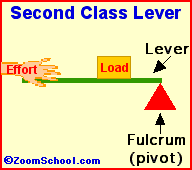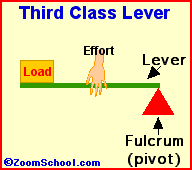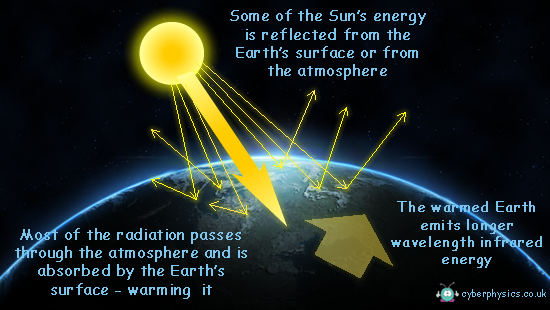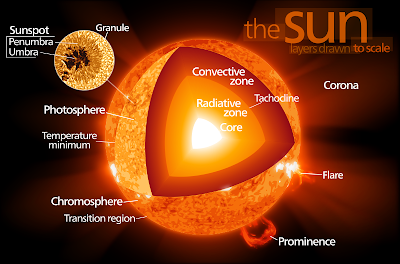Jean `s Blog
Friday, May 31, 2019
Thursday, January 28, 2016
Inventor and Invention
Latest Invention
Magnetic 'MoonWalker' Shoes Help You Defy Gravity
by Elizabeth Goldbaum, Live Science Contributor | February 06, 2016 08:18am ET
 Have you ever fantasized about walking on the moon, but you don't want to put on a spacesuit and blast more than 200,000 miles (322,000 kilometers) through space? A New York-based startup plans to turn this lunar fantasy into a reality, and it could be as simple as putting on a pair of magnetic loafers.
Have you ever fantasized about walking on the moon, but you don't want to put on a spacesuit and blast more than 200,000 miles (322,000 kilometers) through space? A New York-based startup plans to turn this lunar fantasy into a reality, and it could be as simple as putting on a pair of magnetic loafers.
Moonshine Crea, the company developing the out-of-this-world footwear, is strategically inserting superpowerful magnets at the base of its shoes to create a force field, leaving wearers light on their feet.
The shoe, named "20:16 MoonWalker," relies on N45 neodymiummagnets, which are among the most powerful permanent magnets known. As permanent magnets, they create their own force field, without an external current, and work like refrigerator magnets. [11 Outdoor Gifts for Exploring Our Amazing Planet]
There are different levels of magnets, like N40, 42 and 45," said Patrick Jreijiri, a mechanical engineer and designer for the 20:16 MoonWalker. The neodymium magnets' strength level depends on their exact composition, which is primarily a mix of neodymium, iron and boron.
"N45 is stronger than the rest and still on the cheap side," Jreijiri told Live Science, which is why it was chosen. There are around 12 to 13 magnets on one layer that repel a mirror image of 12 to 13 magnets on another layer in each shoe. The repellant force comes from the orientation of the magnets, which are arranged so that their north poles align with each other.
The magnets range from 1 to 2 inches (2.5 to 5 centimeters) in diameter. The 2-inch magnets are strong enough to move 27 lbs. (12 kilograms) of material, and the 1-inch magnets are capable of moving objects up to 55 lbs. (12 kg), Jreijiri said.
The magnets and resulting repulsion cover the entire area of the foot, so when a person is walking, he or she is pushing against the combined strength of the magnets, Jreijiri said.
"As you're walking, your foot will exert pressure on the magnets unequally," he said. To remedy that, the bigger magnets are directly under the heel and ball of the foot to counteract the extra force placed on these parts when people walk. Furthermore, the space between the magnets creates a sort of cushion and adjusts to how a person walks, he said.
The gap also means that an individual's weight won't be a factor in the sensation he or she will feel while wearing the MoonWalker shoes, Jreijiri said, as long as the wearer is less than 403 lbs. (183 kg), at which point the magnets would collapse.
"The genius design in it is that it has a 6-millimeter [0.24 inches] gap between the magnets, and the closer the magnets come to each other, the more pull you will have," Jreijiri said. "So, if you're 60 kilograms [132 lbs.], you'll feel the same thing as if you are 180 kilograms [397 lbs.]," he said.
And Jreijiri said there's no such thing as too much "moonwalking" — the 20:16 MoonWalker is just like any shoe, but instead of using rubber or springs in the soles, it uses magnets. And the shoes are also lined with memory foam for extra comfort, he said.
The outer layer of the shoe is made of gray and white synthetic fabric, and the inner layer of the shoe is a DuPont Tyvek synthetic polyethylene, which, the company boasts, is the same material used by NASA on its space station modules.
The 20:16 MoonWalker shoes don't have the elasticity that would normally be lost in ordinary shoes after longtime use, Jreijiri said. "The magnetic fields in the magnet are always there, so unless you take a saw and cut it in half, it should be working for a long time," he said.
Moonshine Crea is raising money on the crowdfunding site Indiegogoand plans to deliver its finalized product in September, Jreijiri said. The project has already amassed more than $141,000, which is more than seven times more than the company's initial goal of $20,000.
Old Invention
ARCHIMEDES

Archimedes (287-212 BC) was a prolific ancient Greek mathematician. Archimedes invented the water screw, a device for raising water using an encased screw open at both ends. The screw is set an an angle, and as the screw turns, water fills the air pockets and is transported upwards. The Archimedes screw is still in use today. Among his many accomplishments was the first description of the lever (around 260 BC). Levers are one of the basic tools; they were probably used in prehistoric times. Many of our basic tools use levers, including scissors (two class-1 levers), pliers (two class-1 levers), hammer claws (one class-1 lever), nutcrackers (two class-2 levers), and tongs (two class-3 levers).
 A Class 1 Lever. |  A Class 2 Lever. |  A Class 3 Lever. |
\
Archimedes and the Law of the Lever
.
Saturday, January 23, 2016
All About Science
Our Star, The Sun
The Sun is our local star. Like the other stars, it is a ball of very hot gas. It lies about 150 million kilometers from Earth and is about 1.4 million kilometers across. The Sun pours huge amount of energy into space. The light and heat that reach Earth make life possible.
- What is the Sun`s surface like?
The Sun`s surface is a bubbling, boiling mass of very hot gas, constantly in motion, like a stormy sea. Here and there, fountains of flaming gas thousands of kilometers high shot out. These are called prominences. Eventually, they curve over and fall back. Violent explosions called flares also often take place, blasting particles into space that can cause magnetic storms on Earth.
- Where does the Sun get its energy?
The energy that keeps the Sun shining is produced in its centre or core. The pressure in the core is enormous, and the temperature reaches 15 million Degree Celsius. Under these conditions, atoms of hydrogen gas fuse (join together) to form another gas, helium. This process is called nuclear fusion. It produces enormous energy amounts of energy.
 |
- What happens when the Sun warms Earth?
The Sun pours energy on to Earth, warming the land and the water in the oceans. Gases in the air trap the heat and warm the atmosphere. they act like a greenhouse, so the warming process is called the "greenhouse effect". One of the main gases that traps heat is carbon dioxide, produced when fuels burn
 |
- What is the Sun like inside?
The Sun is made up of a number of layers.In the centre is the very hot core,where energy is produced. This energy travels outward s by radiation , reaching the outer layer , called the convection region. There, currents of hot gas carry the energy to the surface (photosphere), where it escapes as light and heat. The temperature of the surface is about 5,500 Degree Celsius. Sunspots are dark patches on the surface. They are about 1,000 Degree Celsius cooler.Some sunspots grow grow to be bigger than earth.
 |
Occasionally, the moon moves across the face of the Sun during the day, blotting out its light and casting a dark shadow on earth. Day turns suddenly into night. we call this a total eclipse of the Sun. Eclipses occur because, from Earth , the moon seems to be almost the same size as the Sun and can cover it up. Total eclipse can only be seen over a small part of earth because the moon casts only a small shadow.
10 Amazing Facts About The Sun |
Wednesday, January 20, 2016
Vision And Mission,
The DepEd Vision
We dream of Filipinos
who passionately love their country
and whose values and competencies
enable them to realize their full potential
and contribute meaningfully to building the nation.
As a learner-centered public institution,
the Department of Education
continuously improves itself
to better serve its stakeholders.
The DepEd Mission
To protect and promote the right of every Filipino to quality, equitable, culture-based, and complete basic education where:
- Students learn in a child-friendly, gender-sensitive, safe, and motivating environment.
- Teachers facilitate learning and constantly nurture every learner.
- Administrators and staff, as stewards of the institution, ensure an enabling and supportive environment for effective learning to happen.
- Family, community, and other stakeholders are actively engaged and share responsibility for developing life-long learners.
Subscribe to:
Comments (Atom)
